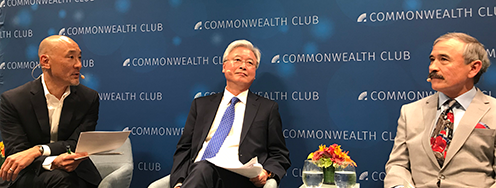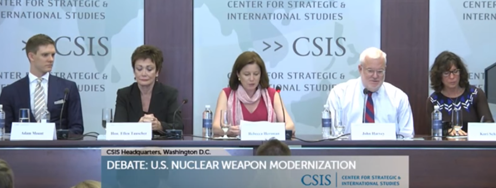Cutting Budgets, Cutting Bombs

Two years ago, when talk of “fiscal responsibility” began to dominate the political discussion, Ploughshares Fund realized that we had an unprecedented opportunity to tilt Washington’s budget axe toward the nuclear weapons complex. So we organized and funded a campaign to reduce spending on nuclear weapons.
Before we began our campaign, nuclear spending was surging, Washington was clueless about the costs and plans were racing ahead to upgrade the entire nuclear arsenal and keep it in place until the end of the century.
Through the campaign, we got the public’s attention by pointing out what nuclear weapons cost – an estimated $640 billion over the next decade. We worked with leading voices in Congress to encourage them to scale back wasteful nuclear weapons programs.
Today, the nuclear spending tide is beginning to stem – in part because of the dedication of our partners in our nuclear budget campaign.
Already, our campaign has seen major successes. Last year, a $6 billion plutonium bomb plant – which our grantees like Nuke Watch New Mexico and the Project on Government Oversight had loudly challenged for years – was effectively cancelled. Congress also cut $60 million from a failing plutonium fuel project, with strong support from our partners like Taxpayers for Common $ense and the Alliance for Nuclear Accountability.
This year, we’re working to cut a bomb.
Right now, our champions in Congress are pursuing cuts to an $11.9 billion nuclear bomb – the B61. These so-called “tactical” nuclear weapons have been stationed in Europe since early in the Cold War. They were meant to deter the Russians from invading Europe, but lost their strategic purpose when the Soviet Union dissolved. That’s why Presidents George H.W. Bush and George W. Bush unilaterally withdrew nearly all of them. But some NATO members want the last 200 bombs to stay in Europe as a political symbol of American commitment to NATO.
It’s a symbol we can’t afford. The U.S. is set to spend $11.9 billion to upgrade these aging bombs – with each bomb costing more than twice its weight in solid gold. But the bombs are not relevant for today’s world, and every dollar spent on them is a dollar that isn’t used to address the security challenges of the 21st century.
That’s why there is increasing support for cutting the B61 bomb program. Concerned veterans involved with the VoteVets.org, a Ploughshares Fund grantee, are reaching out to their representatives in Congress and asking them to cut the bomb. Twenty-four national religious organizations – organized by our grantee David Culp of the Friends Committee on National Legislation – are urging Congress to reject funding the bomb. And, as a product of the work done by many of our partners, even The New York Times has come out against the B61 program.
It’s too soon to say what Congress will do. Cutting funds for the B61 would be a welcome sign of fiscal sanity and could eliminate the most wasteful elements of the program. If Congress were to scrap the B61 all together, it could bring about the end for U.S. tactical nuclear weapons – erasing a dangerous legacy of the Cold War.
Whatever the outcome, we are certain that – thanks to the work of our budget campaign – Congress is stunned with the sticker shock of nuclear weapons. The grim fate of the B61 bomb program is the first major sign that Congress is ready to end the nuclear spending spree.
This is bigger than the B61. Budget frustration will set the tone for the coming years as the U.S. recasts its nuclear policy – questioning how many weapons it afford and how many it can shed.
We would answer “fewer” and “thousands.”




